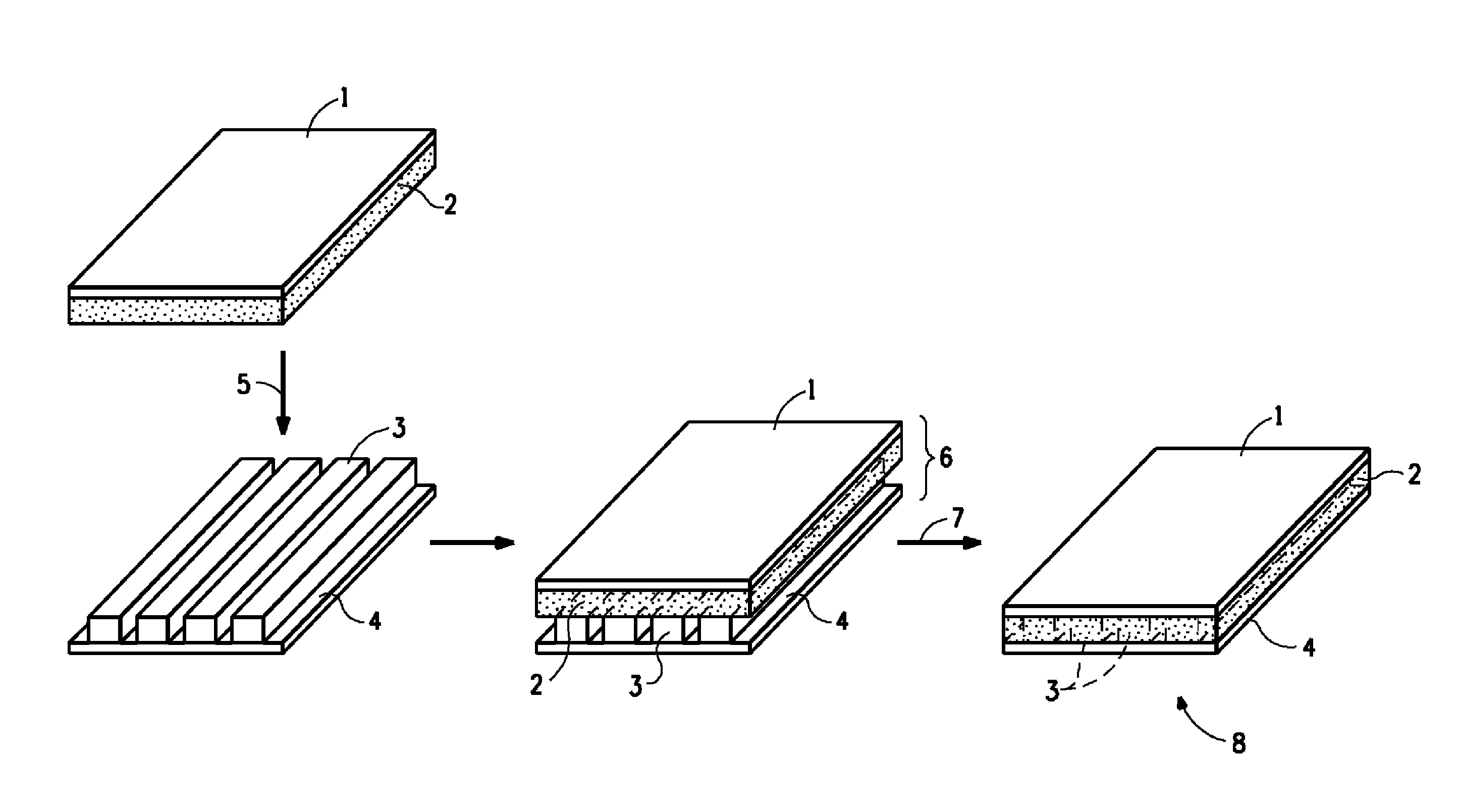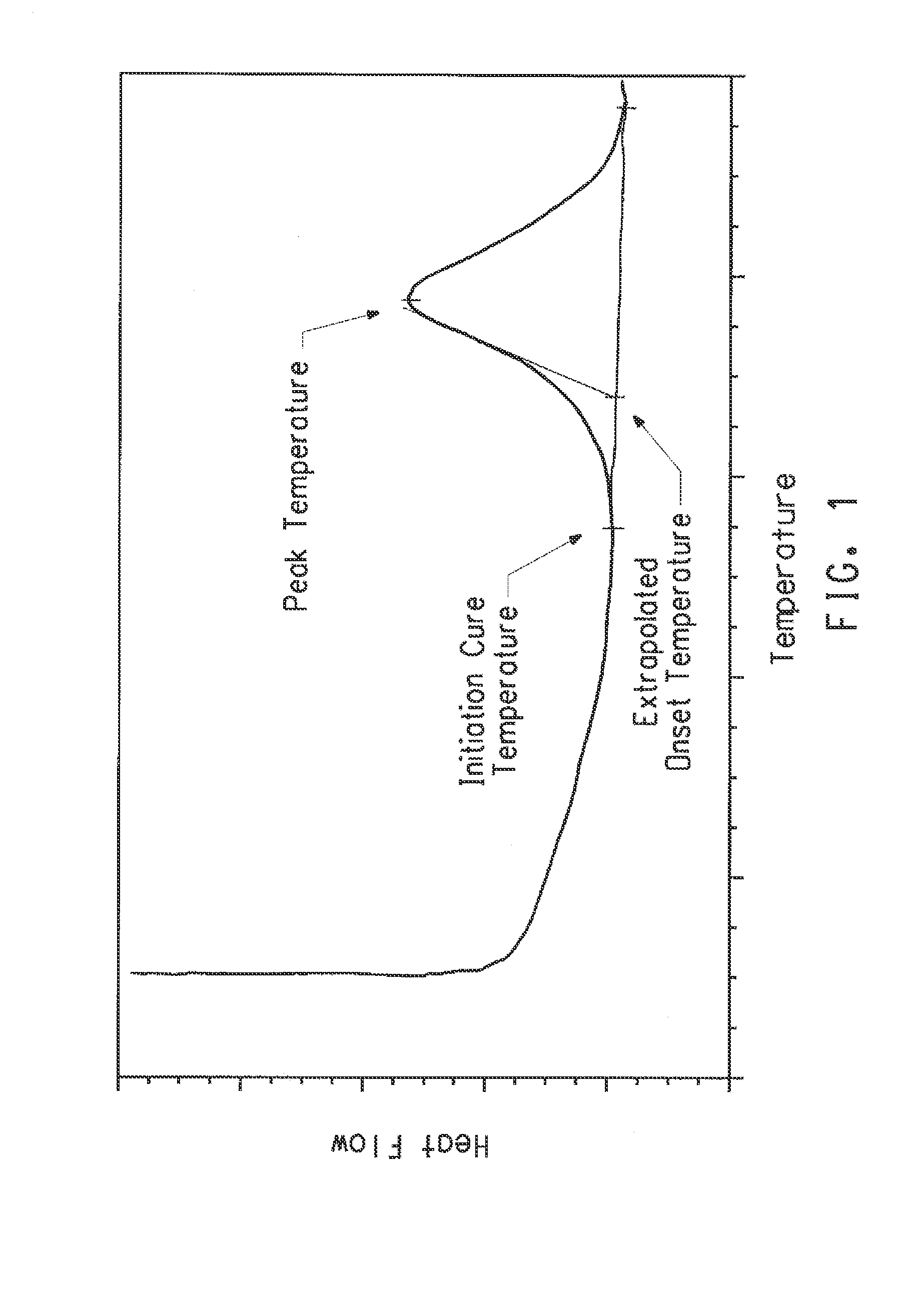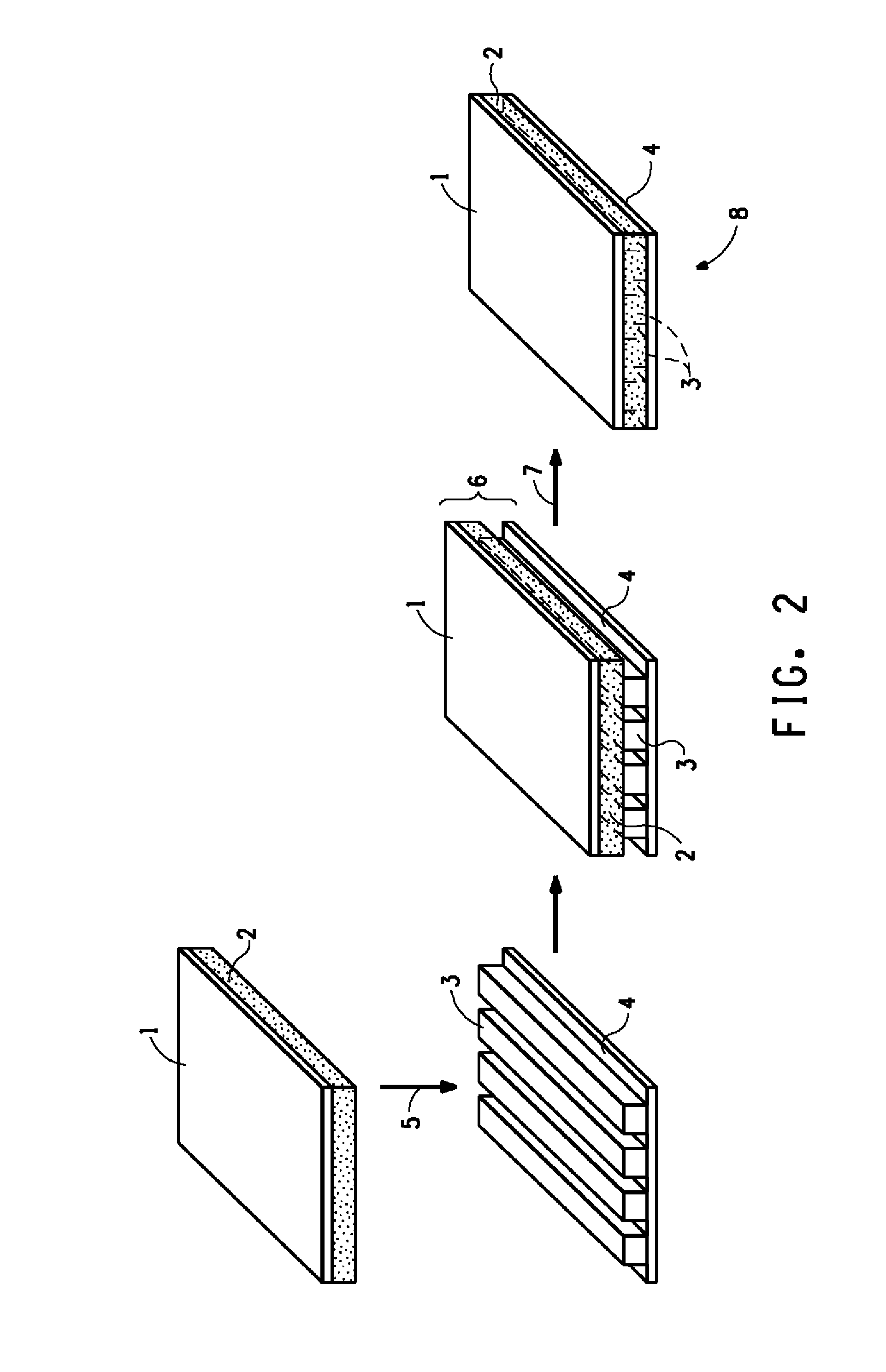Curable composition comprising bis-benzoxazine, method of curing, and the cured composition so formed
a technology of bisbenzoxazine and composition, which is applied in the field of curable composition comprising bisbenzoxazine and an aminefunctionalized triazine, can solve the problems of limiting the utility of commercial applications and long shelf li
- Summary
- Abstract
- Description
- Claims
- Application Information
AI Technical Summary
Benefits of technology
Problems solved by technology
Method used
Image
Examples
examples
Material and Methods
A. Preparation of Di-Isoimide
Determining Reaction Completion Point
[0102]In the following examples, infrared spectroscopy (IR) was employed to determine the end-point of the di-isoimide preparation. Small aliquots of the reacting medium were withdrawn by dropper-full, dried in a vacuum oven with N2 purge at about 60° C. for about 60 minutes. Following conventional methodology for preparing solids for IR spectroscopic analysis, the resulting powder was then compounded with KBr followed by the application of pressure to the resulting compound, thereby forming a test pellet. IR absorption peaks at 1836 cm−1 and 1769 cm−1 were monitored to follow the increase in the concentration of the di-isoimide product. Similarly, IR absorption peaks at 1856 cm−1 and 1805 cm−1 characteristic of PMDA and 1788 cm−1 characteristic of melamine were monitored to follow the consumption of reactants. When the PMDA and melamine peaks became undetectable, the reaction was considered to be ...
example 1
[0115]29.04 g of melamine, 25.11 g of PMDA and 150 g of cyclohexanone were mixed using a mechanical stirrer in a vial. The mixture was stirred for eight days until conversion was complete. The reaction completion was confirmed by IR spectroscopy. A sample from the reaction mixture was dried in a vacuum oven. IR spectra of the final solid product showed the disappearance of the PMDA peaks at 1856 & 1805 cm−1 and melamine peak at 1558 cm−1 and the appearance of the isoimide peaks at 1836 & 1769 cm−1.
[0116]The materials and procedures employed in Comparative Example A were replicated except that 1.0 gram of the thus prepared di-isoimide pre-dispersed in 4.0 g of cyclohexanone were combined with the other ingredients to form the coating comprosition, and 6 g of Phosmel® 200 Fine were employed instead of 7 g.
[0117]An approximately 25 micrometer thick coating was prepared in the same manner as in Comparative Example A. A DSC measurement was done on a sample of the coating. Data are shown ...
example 2
[0120]The materials and procedures employed in Example 1 were replicated except that 0.4 g of the di-isoimide of Example 1 was pre-dispersed in 1.6 g of cyclohexanone, and 6.6 g of Phosmel® 200 Fine were employed instead of 6 g.
[0121]An approximately 25 micrometer thick coating was prepared in the same manner as in Comparative Example A. A DSC measurement was done on a sample of the coating. Data are shown in Table 1.
[0122]An encapsulated printed wiring board was prepared employing the thus prepared coated Kapton® FPC polyimide film following the method of Comparative Example A. In the resulting cured construction, the copper conductive pathways were fully encapsulated.
[0123]The average peel strength for five specimens, determined as in Comparative Example A, was 6.87 lb / in with average deviation of 0.12 lb / in
PUM
| Property | Measurement | Unit |
|---|---|---|
| temperature | aaaaa | aaaaa |
| thickness | aaaaa | aaaaa |
| temperatures | aaaaa | aaaaa |
Abstract
Description
Claims
Application Information
 Login to View More
Login to View More - R&D
- Intellectual Property
- Life Sciences
- Materials
- Tech Scout
- Unparalleled Data Quality
- Higher Quality Content
- 60% Fewer Hallucinations
Browse by: Latest US Patents, China's latest patents, Technical Efficacy Thesaurus, Application Domain, Technology Topic, Popular Technical Reports.
© 2025 PatSnap. All rights reserved.Legal|Privacy policy|Modern Slavery Act Transparency Statement|Sitemap|About US| Contact US: help@patsnap.com



